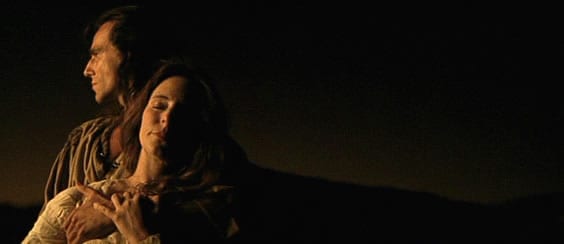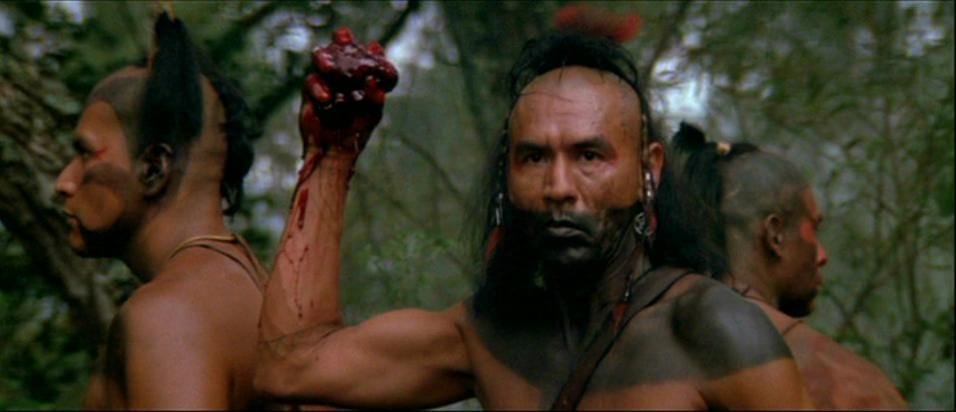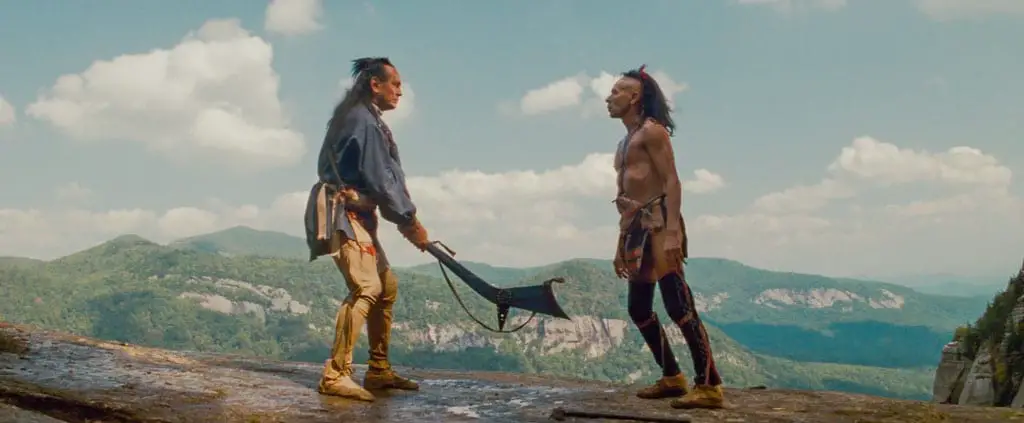In 1992, Michael Mann brought us an epic tale of brotherhood, love, and the enduring will of the human spirit in the shape of the Daniel Day-Lewis lead The Last of the Mohicans. Mann was not the first to adopt the 1826 novel The Last of the Mohicans: A Narrative of 1757, that honor belongs to George B. Seitz’s 1936 film of the same name; Mann’s inspiration came more from Seitz movie instead of the original source material. When you watch Mann’s version it is clear to see that its roots find themselves deeply implanted in the more classic aspect of cinematic storytelling.
The way The Last of the Mohicans is shot, looks as though it was pulled straight from the old western storybooks. The color palette Mann uses is so deliberate; everything pops right off the screen. The aesthetics make it look as if it is an old pastel drawing come to life. The frontier looks harsh and lived in but Mann also makes sure to catch the beauty of it all; The Last of the Mohicans feels like an artist’s rendition of the real world. The darkness of its way of life is put in contrast with the bright colors that are used to bring it to life.
It is this balancing act of beauty and brutality that will form the backbone of The Last of the Mohicans. There so many scenes of the rawness of the world that are peppered with mesmeric slow-motion shots, it is as if Mann wanted to show that there is always the smallest iota of majesty even amongst the manic massacring that is taking place. He wants to keep you aware of the reason why Nathaniel (Daniel Day-Lewis) and his family are fighting. The beauty of their world and their struggle to protect it is encapsulated in Nathaniel’s love for Cora (Madeleine Stowe.)

Nathaniel makes it plainly clear from the off that he has no interest in entering the fray on either side of the divide. He does not want to fight for any military, what Nathaniel fights for are the ones he loves, that being his father Chingachgook (Russell Means) and his brother Uncas (Eric Schweig.) He sees Cora as an extension of this; he is immediately besotted by her as she is by him and their infatuation soon turns to a deeply intense love for one another. This is why Nathaniel stays in the war, to fight for their love, feeling that to save them is to win the war.
I think what Mann may be trying to convey here is that on a grand scale of something as such as the French and Indian War that there a myriad of small stories that run alongside events of such magnitude. There are no pitched battle scenes. Instead, the story focuses on the outskirts of the war. Concentrate on how small militia were faced with the decision to either lose all that they hold dear or instead face the wrath of the British Empire; knowing that any opposition will be viewed as sedition and end in their summary execution. It shows the weight of the cost that is more often than not put on the poorest of shoulders.
Mann went a long way to show the conflict these men felt when faced with the duty to protect the ones they love or the nation they swore to defend. This is what sets Nathaniel and his family apart. They claim no allegiance except to one another. That is why they don’t focus their attention on the French; their focus is firmly fixed on Magua (Wes Studi); the Huron, who was adopted by the Mohawk clan when he was a boy. They see him as more of a threat because he looks not only to take Cora and her sister, but he is also as much of a threat to their way of life as the British or the French.

Magua wants the Huron to abandon their old ways, instead favoring a more western way of life. It is his greed and anger that fuels him, and it is also what makes him a perfect juxtaposition to Nathaniel. If you look at it, they should have much in common. Native American tribes adopted both men after they suffered a personal tragedy, the difference being that Magua does not fully adapt to his new setting as Nathaniel did. Magua just waited, allowing himself to be consumed by rage but Nathaniel shed his former self, becoming one with his new station in life. He became liberated by this but Magua created a prison around himself, just waiting to be unleashed on his enemies.
The contrast between the two men shows us the different ways this world molds people. Some give in to the harsher sides of this existence like Magua but others like Nathaniel seek out its beauty, whether that be the wildlife, the land, or the people that live in it. They both represent the opposing sides of the same coin of creation and destruction. Magua is destruction, wanting nothing but death, revenge, and is led by not just his lust for blood but also his lust for gold. Nathaniel wants to protect life, fighting for nothing but love, he desires to save not to hurt, his life is all about the sanctity of life, doing everything he can to shield it from the dangers of this world he calls home.

The struggle between the two comes to a beautifully shot conclusion, but it is actually Nathaniel’s father that strikes the killing blow on Magua. It is an incredibly powerful scene that is underpinned with a hypnotic score, in a short sequence. It contains everything that is represented throughout the narrative of The Last of the Mohicans. Uncas death shows us the brutality of the world. When Alice (Jodhi May) jumps to her death, it shows the futility of it all, how some can not face the dangers; instead, only seeing freedom in the release of death.
Mann, shows us once again that this world is filled with tough choices and even harsher realities. Even when Chingachgook gets his swift revenge on Magua, it is not a moment of triumph; it is a moment filled with sorrow, that is soon followed by his revelation to Nathaniel that he is now the last of his people. The end of this story is the same end that many Native people had to endure, looking out on a land of plenty, but knowing that there will be no place for him or his people. It is a bittersweet ending to an epic tale, in a brief moment, Mann is able to layout the future of not just Chingachgook’s people but also the future of the Native American people as a whole.
Upon looking back on The Last of the Mohicans, it is a reminder of how adept Michael Mann is at crafting a world and telling personal stories on an epic stage. He is a meticulous auteur that always adds a layer of style on top of rugged tales. What he did in this entry is just that, he constructed a rugged world with a touch of the old fashioned American tale just sprinkled on top for good measure, using an old-world to tell a story for a modern-day audience, in doing so he created an instant classic.





This is a beautiful tribute to a beautiful film. Thanks!